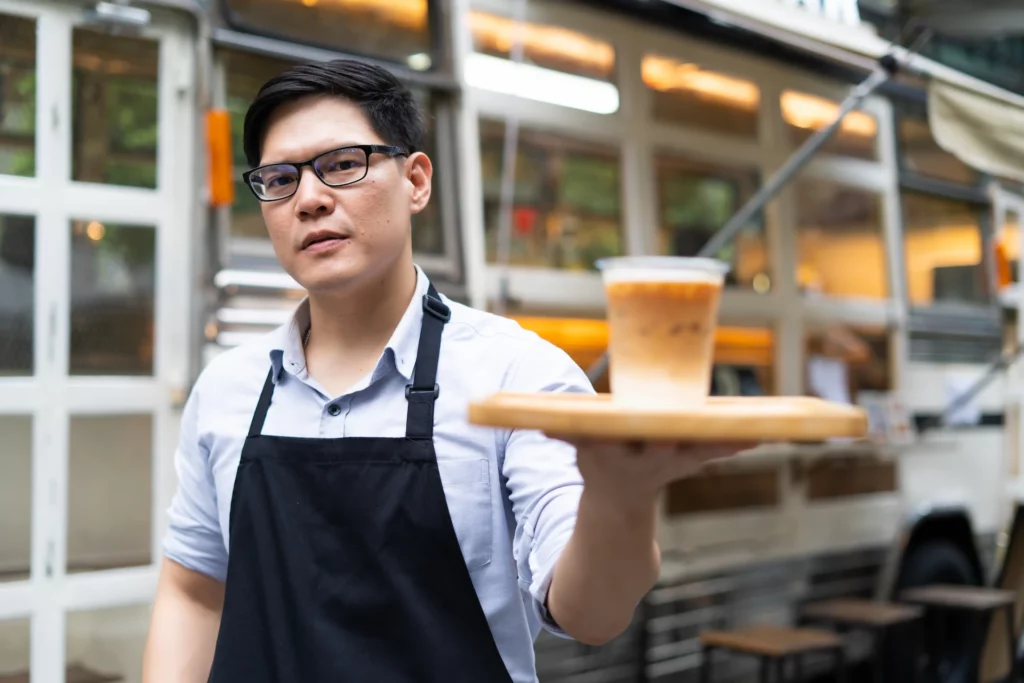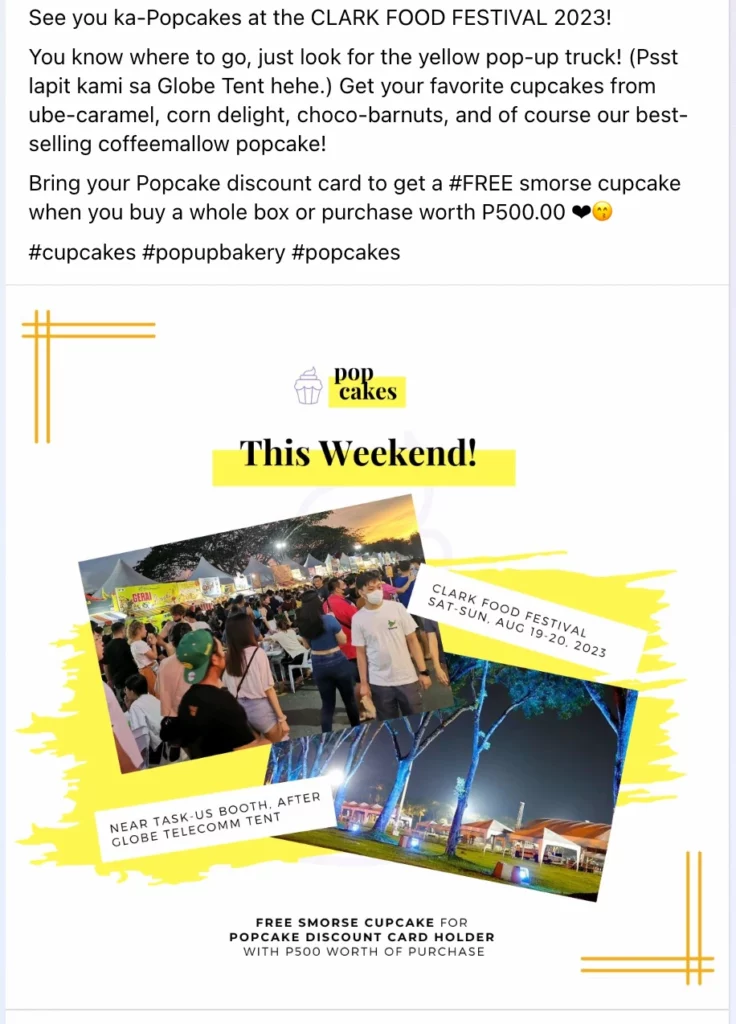
Remember the hay days of food parks? A space or building converted to a business center where food merchants are all aligned or stacked side-by-side with a wide array of food offerings?
A similar concept has grown in popularity after the pandemic and is quickly climbing the country’s rank as the most prominent business venture in the food commerce category- the mobile food industry; from pop-up coffee shops in stalls or motorcycles usually found along the side of the road or your street corner, to food trucks and vans in public parks and parking lots.

Social experts nod to the idea of people’s immediate attraction to open spaces and al fresco spots after a year or two of lockdowns. Customers and potential customers suddenly have this urge to splurge on outdoor stuff and concepts, not to mention the rustic vibes of a contemporary food stall with nature. In addition to that, like most Asian countries, ingrained in our lifestyle is the street food culture which mobile food businesses have their roots from.
Why is there a need for digital marketing?
A bounty of reasons!
But first, it’s best to understand that most owners prefer to invest in this form of start-up business because it requires less effort, less cost since there is no rent payment (most of the time), well-managed operating hours, and no need for additional resources from staff to tables and chairs. It’s also taking a good page on how the crowd usually wants food or drinks that are fast and on the go.
Still, a small business is a small business, and without a permanent location or specific routine business hours, there will be challenges in building its online presence. Digital marketing helps to ensure one’s brand:
- Is well promoted on social media.
- Has growing following and customers.
- Has constant foot traffic every time they open.
- Is identifiable and recognized.
- Builds an online community.
These digital-first objectives satisfy both the customers and the brand allowing more opportunities for the mobile business to eventually expand and grow into a bigger form of venture in the food industry.
Excited to kick-off your digital marketing strategies for your pop-up / mobile shop? Before going there, here are some essential points to consider:
1. Make sure the crowd understands what “mobile”, “pop-up” means.
Didn’t expect this for a first point? Well, remember that brands and businesses revolve around the brand name and affiliating labels or related terms. Believe it or not a lot of mobile businesses lose customers because of the ambiguity of their store’s type and mode of operation.
Adding a subname helps, example: Miguel’s Tacos – Pop-up Mexican Food, Sisig on the Road – Mobile Ulam Takeout, Seoul-o Eats: Korean Food Truck; by following the brand name with a brief description creates clarity and settles expectations from customers and users browsing their social media.

For first-time business owners who are still thinking about their brand name, it’s recommended to play with the words pop-up, mobile, street locations, or related terms, example: Pop-up Donuts, Street Burgers, Shawarma @D Park, Rotonda BBQ,
A creative name would benefit your brand in the long run- from campaigns, sales tactics, and more.
2. Unique offerings and an interesting location are a good combo!
Now a lot of factors are considered here. Usually mobile businesses sell only a few items in their menu. Thus, ensuring one or two of these are unique or best-sellers, a hook item customers must keep coming back for and first time customers must try.
These “rare” products are social media’s footprint for trends and to spark up engagements. It is best to market this first online and present them as your pop-up store’s brand mascot. Example if you’re selling donuts, make sure one flavor is rare, like a donut with leche flan filling or a “tinapa” (dried-smoked fish) pizza flavor.

Moreover, take advantage of your location. Yes, being mobile allows you to choose various locations, but it is best to consider the crowd flow- does the place have many passers-by or is it near a place where there is a pool of potential buyers like a school, park, or a church on Sundays.
Take advantage of scenic views as well. Most pop-up stalls end up being posted or featured by customers on Instagram, which heavily values aesthetic content. So, if possible, choose a spot and time where there is a beautiful sunset, eye-pleasing background, and the like.
Note however to check if it’s allowed to sell on your desired location and time. Learn about local ordinances if it’s illegal or legal to sell on the roadside or street pavements.
3. Keep customers updated where and when you’ll pop-up.
Utilize your social media account well. Inform online users your schedule and location as part of a diversified social media content. Posting a monthly calendar is practical and equal to a weekly bulletin.
When providing information, always engage by putting on a perspective that you have a strong following. This creates the notion that your business is sought after and most likely improves the first impression among online users that are new to your brand.


Add imagery to your location. If you’re in a park, include snippets of the park and attractions in it that customers can also check out apart from visiting your store.
Step up promotions by adding a gimmick or something new for your schedule, like a new product, or sales on the flavor of the month to get your customers always excited.
4. Reels are a great way to tell your day!
Have you watched those Korean food videos where the cook prepares and cooks them? There is something about watching people make or prepare food that automatically jumpstarts cravings and not to mention a video watched until the end.
Now informing your customers of your schedule and location is just a quarter of what you can produce as content. The next step is to entice them further by bringing the food items to their screen. Yes, curated pictures have the same aim, but a reel or long-form video of your offerings or people eating your food brings in the results- cravings that can trigger an online user to purchase.
The angle can be anything from a brief video of opening the stall or preparing the mobile set of your shop to a panning of the cooked meals and prepared drinks. You can do a full vlog documenting how the day went through, especially if you popped up at an event or a concessionaire at a festival.
Moreover, despite a long stretch for start-up food businesses, inviting influencers and vloggers can help promote and inform netizens of your offerings.
5. Plan out events and mystery pop-up locations.
What’s exciting about owning a small-scale business like a mobile food shop is the opportunity to create events and leverage this as opportunities to attract customers and even content creators.
One doesn’t need to worry about the venue; the concept can be creatively simple. Pop-up cafes may do an outdoor coffee mixing workshop, or a mobile bakery in a park can entice kids and parents for fun games where they win prizes like vouchers or free items. Another great idea is to partner with a busking community where musicians and performers can provide entertainment in your location.
If a mobile food biz has unique offerings or trending products, these can be used for a must-go event. Let’s say your food truck is known for its delicious pound burgers but are quite costly- plan out a 1-hour eat-all-you-can where the pound burgers will cost half the price.
Leveraging on the factors like location, you can partner with trending locations and venues and do one-time appearances every month or thrice a year. Again, making a buzz using rarity and limited-time angles is a good idea.
Ready to try digital marketing on your mobile food business?
Having a social media account is enough, but it has grown impressively to serve businesses in their growth and deliver results. Features for content like videos and graphic postings, ads, and e-commerce are within reach for owners to utilize; all the brand needs is a guiding hand.
The food industry is familiar with digital marketing, but the growing interest and opportunities for mobile or pop-up food businesses have changed the game. Soon, upon establishing an effective digital marketing plan and well-placed essential online strategies, owners will navigate newer features and trends.
But let’s meet them when we do meet them. For now, it’s best to focus on keeping your mobile food shop active online, always in the now, continuously garnering new followers and building a loyal following.
Need to get there quicker?
Let us help you in making your business a success. Message Emerge to know more on the untapped opportunities with digital marketing or consult with our experts.
The post Essential Digital Marketing Points for Mobile & Pop-up Food Businesses appeared first on Emerge.

Leave a Reply